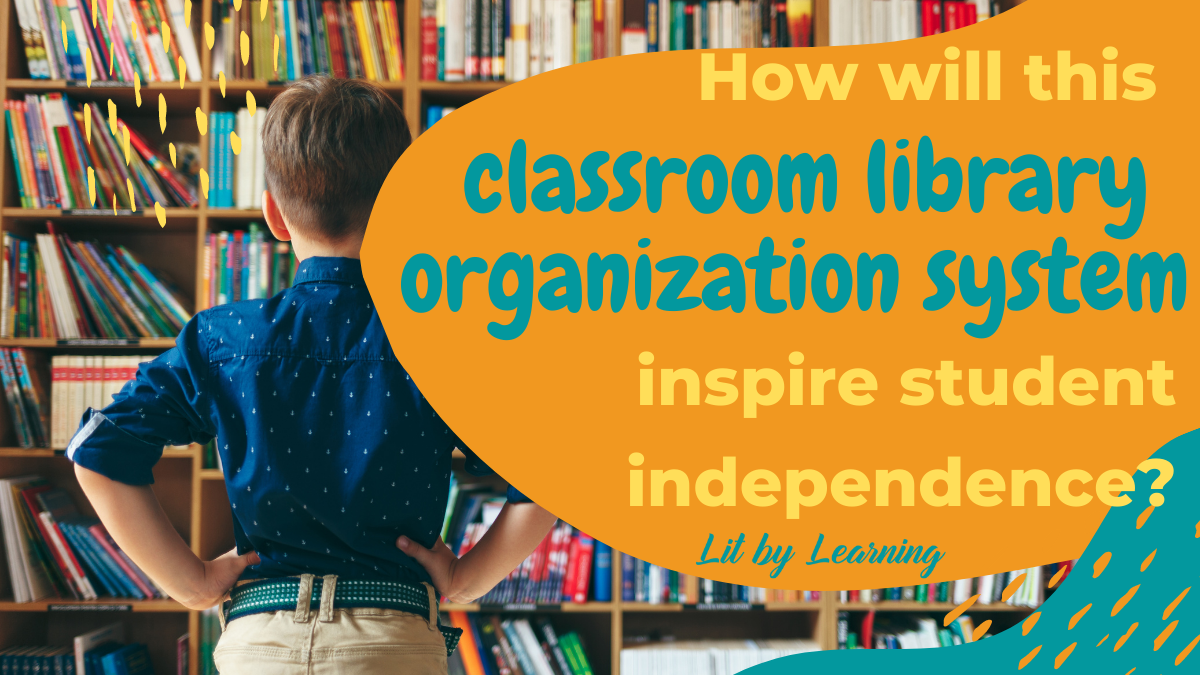Hi, teachers! It’s time to return to school; is your classroom library ready? What is your classroom librayr organization system?
Beautiful books and fostering a love for reading are right at the core of my teacher’s heart, so I always try my darndest to make my classroom library the focal point of the classroom. Does that mean it looks Pinterest-worthy all the time? No. BUT, after many years of trial and error and teaching almost all the early elementary grades, I have found a classroom library organization system that makes for a functional, beautiful, student-led library.
Read on to read tips and see classroom library pictures – and videos – that will help you get started!
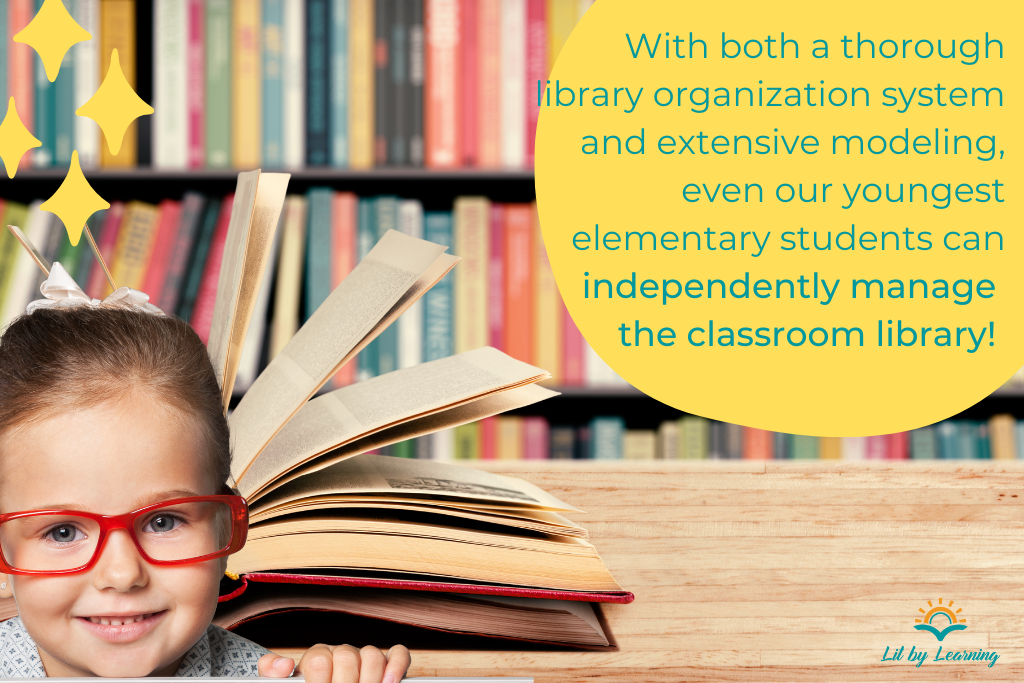
I would be surprised to find a teacher who doesn’t aspire to cultivate student independence in their classroom. Less work for the educator, more ownership for the learner – a perfect match, right? Yet, the classroom library can be one of the most difficult places to encourage independence because we want it… just… so. Or is that just me? Too much teacher intervention and it’s another full-time job and too little… book chaos (we won’t even go there). Use these easy tips to make your classroom library have just the right goldilocks amount of student independence.
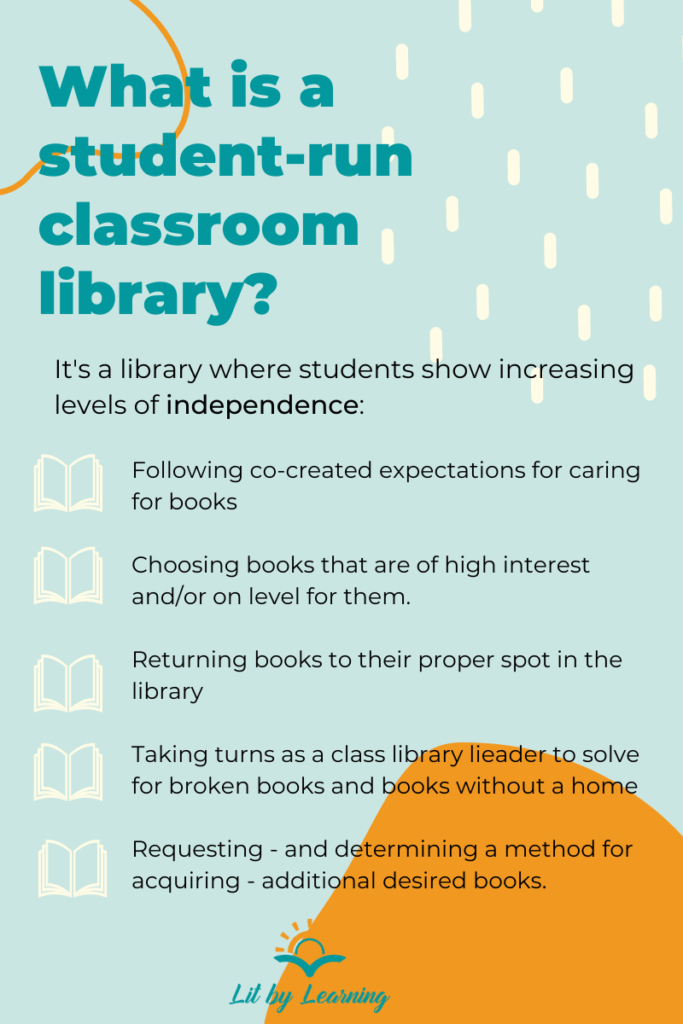
Classroom Library Organization System 101: Sort your books!
Categories for Classroom Library Organization System
Some teachers may have directives about how to classify books: by DRA reading levels, Lexile levels, or another district-wide mandate. The lucky ones (me!) get to decide how to organize their collections. There are so many engaging ways to sort your books, but here is how I choose to organize my classroom library. I have three major categories along with “highlight bins” and a “this unit” selection rack. For each one, I really try to put myself in students’ shoes and think about how they will be most successful in finding the right book. Here’s the breakdown of how it looks here in 102.
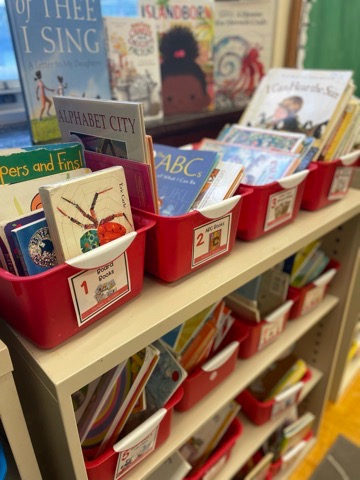
Fiction Books
I organize my precious collection of fiction books by favorite characters/authors and interests. I have bins for the classic 1st grade heavy hitters like the Little Critter series by Mercer Mayer, Clifford books by Norman Bridwell, classics by Leo Lionni – you get the idea. I also have interest bins that focus on specific cultures or topics: Latinx books, African & African American books, and a “Be You” bin that focuses on gender & sexuality. My goal is to provide plenty of entry ramps for students to find new books that light their reading fire!
Non-Fiction Books
All of my non-fiction books are sorted by topic. We have science, space, animals, biographies, history – about 12 bins in total. Most of these books are outward-facing so the covers draw the students in. Students love perusing texts about everything from Dinosaurs to Historical Figures!
Leveled Books
Leveled: My leveled books are a mix of fiction and non-fiction; they’re basically the ones I could easily level using a free tool like Scholastic’s Book Wizard. My school uses the Guided Reading reading levels, so given the range of reading in my classroom, I have separate bins levels A-M+. It is just as simple to arrange books by Stoplight Reader Levels, Lexile Ranges, DRA levels – just pick the system that works best for you and your readers. In these bins, I put a mix of both fiction and non-fiction books to ensure that students shopping for just-right books are exposed to a variety of genres!
Books with more than one home
There are books that could go in two places! “Swimmy,” by Leo Lionni, for example, is a GR Level M book. It could go in the “Leo Lionni” author book bin or the Level M bin. Other books, like “The Ugly Vegetables” by Grace Lin might fit in up to three places: Asian-American focus, GR Level L, or our cultures/community focus bin. My rule of thumb is to a) fill up bins that don’t have as many books, b) put books where I think students will look for them and c) if possible, put copies of the book in multiple locations!
The next step in classroom library organization: clear, user-friendly labels!
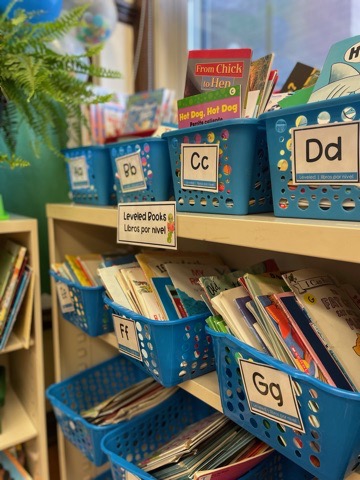
Provide a color-coded home for each book
You have your organization system figured out – YES! Now: where will they live? Most of my books live in bins, but other beautiful classroom libraries use shelves. You choose. I have gone out of my way over the years to find fairly coordinating bins in the three following colors: red for fiction, green for non-fiction, and blue for leveled books. Clearly, you don’t need to use my same color scheme, but color coding your book containers is not only visually beautiful but super helpful for students. In my library, all of the non-fiction books are in green bins, all the fiction in red, all the poetry in purple – you get the idea. Not only is it pretty, it helps students distinguish genres from the get-go!
Clear labels – on bins and books!
Book Bin / Shelf Labels
So, every book has a home – AMAZING! The next step: labels. Here’s the trick: you need labels on the bins AND the books. Let me explain. The labels on the bins make sense. Even if you teach a later elementary grade like 4th or 5th, I would still recommend using bright, colorful pictures on your books labels. They look nice, they make your eyes happy – it’s worth it. Your labels should also have a short identifying code or number on them. I use numbers 1-20 in a big, bold font for easy visibility.
Book labels
Next: the labels on the books. Each book needs to have a label on it with the short identifying code/number. This is what attaches the book – that is hopefully being lovingly read by little hands – to the bin where it belongs. When students go to return their books, they can simply match the label on their book to the number on the bin and BAM! – the books are all set for another reader to enjoy!
Classroom Library Organization & Management: Plan for mistakes!
No matter how beautiful your library organization and management system is, mistakes WILL happen! Just like you would for any other area, proactively planning for classroom library mishaps will serve you and your students. Here are some ideas of how to plan ahead:
Broken Books
Have a bin for broken books: I call mine the “Book hospital” and label it with a big old first aid red cross symbol. This is where students can put books that have gotten ripped, torn, or written in. They feel like they’ve done their job by delivering it to the right place – and then I can decide what to do with them at another time.
Books without a Home
Have a bin for books without a home. Book labels will fill off, students will be in too much of a rush to put their books back properly – it just happens. Having a “dump” spot where students can put books is much more helpful than students reshelving haphazardly.
Model common errors
Look for common errors as students use the library for the first week or so. I always have students who disregard the color of the number on the book and just plop it into another bin with the same number. For example: a fiction book labeled with a red 10 is dumped into green bin #10 instead, mixing genres. Conduct a think-aloud or a fishbowl experience to address this mistake head-on with the class. Model making the mistake and ask students to guide you to a solution!
Assign Student Librarians
Finally, hand even the tricky parts of classroom library organization and management off to students who you know can handle the job! Similar to how you would have a Line Leader or a Teacher’s Assistant, make “Librarian” another classroom role. These student leaders can then take charge of: sorting the books in the “Books without a home” bin, sorting and labeling any new books that are added, and rehoming books that were reshelved incorrectly. An extra touch would be to have students apply for the role, indicating how they know their strengths make them excellent candidates.
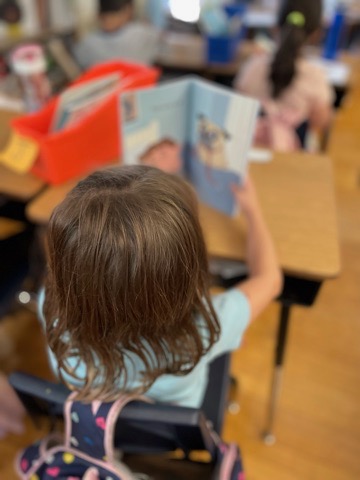
More ways to think about classroom library organization
I hope this gave you some great ideas about how to set up your classroom library organization system. Here’s to us making our classroom libraries increasingly student-run! Check out some of these other great articles for more ideas!
- Reading Rockets: Creating a Classroom Library
- Edutopia: Creating a Diverse Classroom Library
- We Are Teacher: 30 Tips for Setting up an Inspired, Organized Classroom Library
Don’t forget to get your hands on a set of full color classroom library labels!

Beyond Classroom Library Organization: Keep reading on Lit By Learning!
Are you looking for more articles to kickstart your student-centered classroom from the very first day of school? Check out these other posts here on Lit By Learning!
- 5 Beginning of the Year Activities that get students moving!
- An Empowering Learner-Centered Start to the School Year!
- The Ultimate Guide to Crafting Effective Weekly Teacher E-mails
Looking for diverse Classroom Library book recommendations?
Check out my ever-growing book lists for ideas! Click below to get started!

